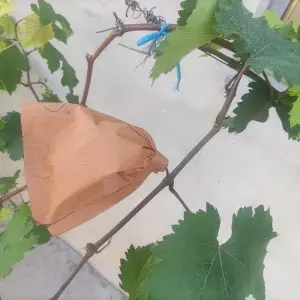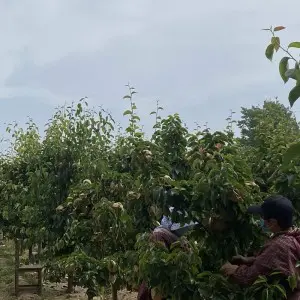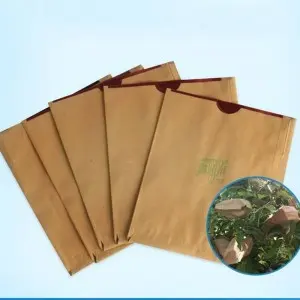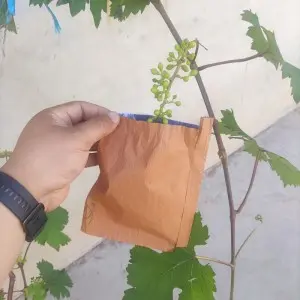Oct . 28, 2025 14:20 Back to list
Fruit Paper Bags – Breathable, Waterproof, Pollen Block
Field Notes on a Small Revolution: Fruit Paper Bags
If you spend any time with growers—from Hebei to Hood River—you’ve heard the same refrain: better color, fewer sprays, cleaner fruit. That’s the quiet promise behind Fruit Paper Bags, and, to be honest, the adoption curve the past five years has surprised even seasoned agronomists.

What’s driving the trend?
Three things: residue-conscious buyers, climate volatility (hail, sunburn, sporadic rain), and the data. Many customers say bagging cuts visible pest damage dramatically and evens up the anthocyanin color background—apples look market-ready right off the tree. In fact, grocers like the “bright and beautiful” finish; exporters love the lower rejection rates.

Product snapshot: FRUIT PAPER BAGS FOR PREVENTING INSECTS AND PESTICIDE RESIDUES IN ORCHARDS
Origin: Caozhuang Development Zone, Fanzhuang Town, Zhao county, Shijiazhuang, Hebei Province. The design aims to reduce disease and insect infection, shield fruit from wind/rain abrasion, and—crucially—limit pesticide exposure on the surface. After bagging, growers often report richer peel color thanks to controlled light and microclimate.
| Spec | Typical Value (≈) | Notes |
|---|---|---|
| Base paper grammage | 45–70 g/m² | TAPPI T 410; real-world use may vary by cultivar |
| Cobb water resistance | ≤ 30 g/m² (60 s) | Rain and dew protection |
| Breathability (Gurley) | 15–40 s/100 ml | Balances gas exchange to avoid scald |
| Coating | Food-contact compliant, non-fluorinated | Complies with GB 4806.8, EU 1935/2004, FDA 21 CFR |
| Service life | 60–120 days in-orchard | From fruitlet to pre-harvest |

Materials, methods, and test regime
- Materials: virgin or FSC-certified kraft, food-contact coating, optional inner black layer for color development.
- Process flow: pulping → sheet formation → sizing/coating → drying → die-cut + fold → QC → carton pack.
- Testing: ISO 187 conditioning; TAPPI T 410 (grammage), T 414 (tensile), Cobb; migration per GB 4806.1/8 and FDA 21 CFR 176.170.
- Typical field results: 30–70% fewer visible insect defects; 0.5–1.5° higher color index on red cultivars; residue risk reduced by limiting direct spray contact (grower-reported).

Where they shine
Apples, pears, peaches, mangos, pomegranates. High-value blocks, export programs, organic conversions, or simply seasons with erratic weather. Plus, the bags help reduce mechanical scuffing during storms and cut sunburn on exposed fruit.

Vendor landscape (a quick, honest take)
| Vendor | Lead Time | Certs | Customization | Notes |
|---|---|---|---|---|
| Hebei manufacturer (origin above) | ≈ 10–20 days | ISO 9001, FSC, GB 4806.8 | Size, vent holes, inner black layer, logo | Strong on orchard trials; stable Cobb values |
| Regional Vendor A | ≈ 3–5 weeks | ISO 22000, FSC | Basic size and print | Competitive for small lots |
| Exporter-Focused Vendor B | ≈ 4–6 weeks | FSC, REACH | Custom coatings | Good EU documentation pack |

Customization playbook
- Dimensions by cultivar (Fuji vs. Gala vs. mango).
- Vent mapping: micro-perf to manage condensation.
- Inner color layer: black for color development, white for heat control.
- Brand print and trace codes for lot tracking.
Two quick case notes
Hebei, 60-acre apple orchard: After switching to Fruit Paper Bags, cull rate for insect blemish dropped from ~12% to ~5%. Color uniformity improved; fewer pre-harvest sprays saved cost (their words, not mine).
Coastal mango exporter: Using Fruit Paper Bags for 90 days, they reported less latex staining and calmer skin tone, which made post-harvest hot-water treatment more predictable.

Compliance, because auditors will ask
- Food-contact: GB 4806.8-2016; EU 1935/2004; FDA 21 CFR 176.170/176.180.
- Quality system: ISO 9001; optional ISO 22000 for integrated facilities.
- Sustainability: FSC chain-of-custody; non-fluorinated coatings.
Bottom line? Fruit Paper Bags won’t replace good IPM, but they’re a smart lever—especially when buyers want spotless fruit without the baggage of residues.
References
- GB 4806.8-2016 Food contact materials—Paper and board (NHC, PRC).
- EU Regulation (EC) No 1935/2004 on materials intended to come into contact with food.
- FDA 21 CFR 176.170/176.180—Components of paper and paperboard in contact with aqueous and fatty foods.
- ISO 187:2022 Paper, board and pulps—Standard atmosphere for conditioning and testing.
- TAPPI T 410 and T 414—Grammage and tensile breaking strength of paper.
-
Comprehensive Guide to CE Certification Apricot Pollen Health Benefits
NewsNov.24,2025
-
CE Certification Mango Fruit Protection Bags: Enhancing Export Quality & Sustainability
NewsNov.23,2025
-
CE Certification Varieties Suitable for Collecting Apple Pollen – Ensuring Quality & Compliance in Apple Breeding
NewsNov.22,2025
-
Comprehensive Guide to CE Certification Mango Cover Bags – Quality, Standards & Trends
NewsNov.22,2025
-
What You Need to Know About CE Certification Peach Blossom Powder Keto
NewsNov.21,2025
-
CE Certification Pear Pollen Collection Base – Ensuring Quality & Sustainability in Global Horticulture
NewsNov.20,2025